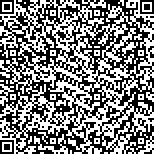文翠凤,黄昊,娅茹,等.镜像疗法联合气动式柔性手套训练对脑卒中后手功能障碍的影响[J].中华物理医学与康复杂志,2025,47(10):914-921
扫码阅读全文

|
| 镜像疗法联合气动式柔性手套训练对脑卒中后手功能障碍的影响 |
|
| |
| DOI:10.3760/cma.j.cn421666-20241112-00902 |
| 中文关键词: 脑卒中 手功能障碍 近红外脑功能成像 镜像疗法 气动式柔性手套 |
| 英文关键词: Stroke Hand dysfunction Near-infrared imaging Mirror therapy Pneumatic flexible gloves |
| 基金项目:上海市静安区医学科研项目(2021MS18、2022QN07);静安区卫生系统重点学科建设项目(2021PY04);上海卫生健康系统重点学科康复医学(2024ZDXK0032) |
|
| 摘要点击次数: 533 |
| 全文下载次数: 421 |
| 中文摘要: |
| 目的 基于近红外脑功能成像技术(fNIRS)观察镜像疗法(MT)联合气动式柔性手套训练治疗脑卒中后手功能障碍的疗效,及其对大脑皮质激活的影响。 方法 选取脑卒中后手功能障碍患者84例,采用随机数字表将其分为镜像组、手套组和联合组,每组患者28例。3组患者均给予常规康复训练,在此基础上,手套组增加气动式柔性手套训练,镜像组增加MT,联合组增加MT同步气动式柔性手套训练。三组训练,均每日1次,每次20 min,每周训练5 d,连续训练6周。于治疗前和治疗后采用Fugl-Meyer运动功能评定量表上肢部分(FMA-U)、行动研究臂试验(ARAT)和Barthel指数(BI)分别评估患者的上肢运动功能、手运动功能和日常生活活动能力,同时采用fNIRS在730 nm和850 nm波段测量氧合血红蛋白(HBO)浓度的变化,并对所得数据进行统计学分析。 结果 治疗后,3组患者近端和远端的FMA-U评分、ATAT、BI评分与组内治疗前比较,均显著改善(P<0.05),且联合组治疗后的远端FMA-U 评分和ARAT评分分别为(12.25±8.80)分和(20.93±15.68)分,均显著优于手套组和镜像组治疗后,差异均有统计学意义(P<0.05)。fNIRS分析发现,镜像组和联合组治疗后的双侧初级感觉运动皮质(SM1)区、患侧躯体感觉皮质(SAC)区和辅助运动皮质(PMC)的HBO浓度均显著高于手套组(P<0.05)。 结论 镜像疗法联合气动式柔性手套训练不仅可以显著改善脑卒中患者患手的功能,还可通过双侧运动模式结合多感官刺激激活患者双侧半球的相关脑区,促进半球间的平衡。 |
| 英文摘要: |
| Objective To observe the effectiveness of combining mirror therapy with pneumatic flexible glove training in treating hand dysfunction after a stroke. Its effect on cerebral cortex activation was documented using near-infrared functional imaging of the brain. Methods A total of 84 stroke survivors with hand dysfunction were randomly divided into a Mirror Group, a Glove Group and a Combined Group, each of 28. In addition to standard rehabilitation training, the Glove Group received 20 minutes of training with a pneumatic soft glove, 5 days per week for 6 consecutive weeks. The Mirror Group received mirror therapy (MT). The Combined Group was given both simultaneously. Before and after the treatment, everyone′s upper limb functioning was evaluated (using the Fugl-Meyer Upper Limb Assessment (FMA-U)), along with their hand motor skills (using the Arm Action Test (ARAT)) and their ability in daily living activities (using the Barthel Index (BI)). Functional near-infrared spectroscopy (fNIRS) was employed to measure any changes in oxygenated hemoglobin (HBO) concentration at 730nm and 850nm wavelengths. Results The FMA-U, ATAT and BI scores in both the proximal and distal regions of all three groups showed significant improvement after the treatments compared to pre-treatment levels. The combined group demonstrated significantly better distal FMA-U and ARAT scores after the treatment (12.25±8.80 and 20.93±15.68 respectively), outperforming both the glove and mirror groups. The infrared spectroscopy revealed that bilateral SM1 activation, affected-side somatosensory association cortex (SAC) and supplementary motor cortex excitability in both the mirror and combined groups were significantly better than among the glove group after the experiment. Conclusions Combined with pneumatic flexible glove training, mirror therapy can not only significantly improve the hand function of stroke survivors, but also activate the relevant brain regions of both hemispheres through bilateral motor patterns combined with multisensory stimulation, promoting the balance between hemispheres. |
|
查看全文
查看/发表评论 下载PDF阅读器 |
| 关闭 |